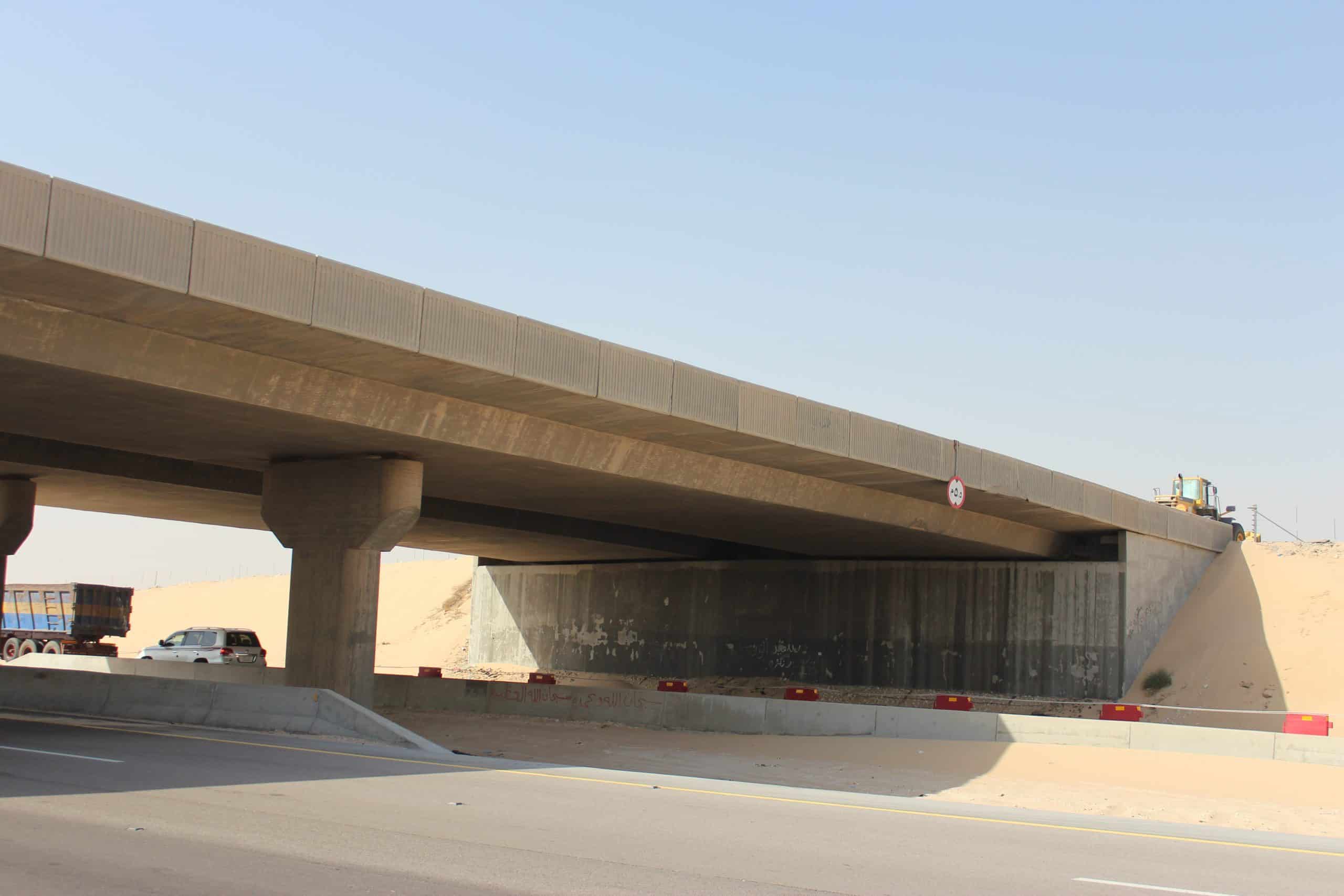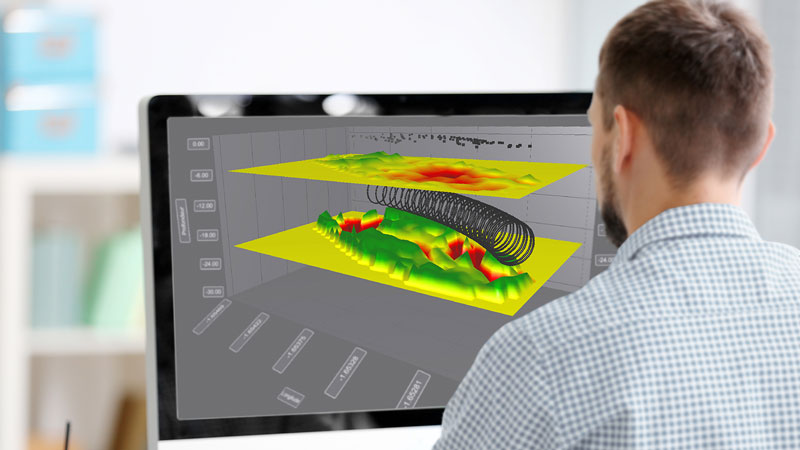Client:
Transport Ministry, Engineering Research International
Transport Ministry, Engineering Research International link opens in a new tab
https://eri-saudi.com/

Not your everyday overcrossing:
Wildlife crossings are structures that allow animals to cross human-made barriers safely, They assist in avoiding collisions between vehicles and animals, which in addition to killing or injuring wildlife may cause injury to humans and property damage.
In Saudi Arabia, several of such bridges were built to allow camel herds safe passage over major highways, like the Riyadh-Dammam one. They share a similar design, with two spans of post-tensioned voided slabs. A few years back, one of those camel crossing bridges collapsed. An investigation was performed, which lead to the demolition of said bridge and the recommendation to assess the state of the remaining 5 camel crossing bridges to ensure their serviceability and users safety.
A solution using Sixense patented technology, the Crossbow:
Sixense was entrusted by the Transport Ministry of the Kingdom of Saudi Arabia to perform the inspection on the 5 camel crossing bridges.
After reviewing the structural drawings, the scope consisted in:
- A comprehensive visual inspection and mapping of the slabs disorders
- PT conduits grout injection assessment, using techniques such as ultrasonic tomography and video-endoscopy
- Measurement of the residual tension in the PT cables
- Laboratory tests on grout samples (extracted after GPR survey)
Sixense added value on this project stands in its ability to measure the actual tension in PT cables with its non-destructive “Crossbow” solution.
The “Crossbow” is a tool that has been developed to assess the tension in wires or strands used in pre-stresssed concrete structures. In order to operate the device, an opening window is made in the concrete to reach the pre-stressing tendons.
The principle of the test consists in applying and recording the force required to transversely displace the tensioned strand/wire. The force displacement correlation provides the actual tension in the wire.
PT ducts detected
Crossbow tests performed
Ducts injection verification by MIRA
Concrete core extractions assisted by GPR
Concrete compressive tests performed
PT duct grout chlorides tests




